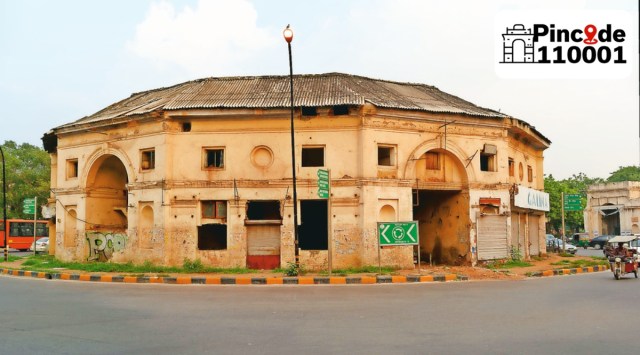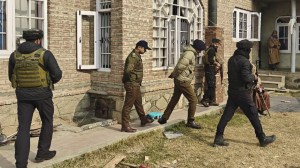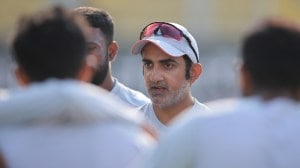Grocers to poultry: How colonial-era Gole Market was a one stop for essentials
The Indian Express travelled on the stretch to and from Noida Sector 16 to ITO and found that the ride was smooth till the Noida link road, after which it got bumpy. The situation was worse on Akshardham road, near the temple, where both vehicular traffic as well as pedestrian footfall is high.
 Named so for its circular central plaza, Gole Market was a
12-sided market with six entrances and a central courtyard
Named so for its circular central plaza, Gole Market was a
12-sided market with six entrances and a central courtyard A stone’s throw away from the high-end stores and restaurants of Connaught Place is what used to be one of the city’s oldest colonial marketplaces — Gole Market, built in the 1920s and designed by Edwin Lutyens.
Named so for its circular central plaza, it was a 12-sided market with six entrances and a central courtyard. It has several features characteristic of Edwardian architecture — the outer facade has colonnaded arches supported by columns while the interior has arched windows, balconies, spacious corridors and high ceilings.
In her book, Connaught Place and the Making of New Delhi, author Swapna Liddle notes: “The commercial spread reached beyond the main blocks of Connaught Place, into nearby areas too. Gole Market, constructed in the early 1920s by the government, was the first market to be built in New Delhi… On either hand, shops for produce such as poultry and fish, and a wide variety of grocers, were located in Gole Market rather than Connaught Place, presumably because it was not the sahibs and memsahibs themselves, but their domestic staff who shopped for these daily essentials. After all, one visitor remarked, Connaught Place was where elegant ladies shopped, wearing hats and gloves.”
Liddle further wrote, “As staff came to reside in this area, the need for the necessities of daily life was also felt. At first temporary stalls came up, and hawkers were given permission to sell. By 1921, the hexagonal market, which soon came to be known as Round (Gole) Market, was built to provide a permanent commercial centre for the area.”
Author Sohail Hashmi told The Indian Express: “This entire area was built when the capital actually began to function from its new location, before that the capital used to be in the Old Secretariat. Gole Market was primarily an area where government clerks used to live, so small blocks of houses have been built in the entire area.”
In 2007, the central building was declared unsafe and shopkeepers were moved out. Since then, a restoration plan to turn it into a museum remained pending for 16 years until it was finally approved by the New Delhi Municipal Council (NDMC) last week. Apart from the museum, which will be themed on ‘Women of Delhi and India’, the NDMC also plans to redevelop its surrounding areas. The project is to be completed within a year at a cost of Rs 21.6 crore.
The roads surrounding the market were, and still are, home to several old stores — from clothes, grocers, sweet shops and meat shops. Among these was Mahamaya clothing store, which specialised in Bengali weaves.
Recollecting the days when he used to live in the area in the 1960s, Hashmi said, “There were grocery shops, meat shops, tailors around Gole Market. If you stand at the roundabout and look down Bhagat Singh road, on the left and right, one will see shops on either side. Amongst them, two of them have Urdu sign boards. This was one of the earliest Bengali sweet shops.”
“The first floor of Gole Market had a reading room which was run by NDMC… we used to go there regularly to read the daily newspaper and magazines. Behind the market, on Reading Road, was the headquarters of the Hindu Mahasabha, where even today the statue of Savarkar still stands,” he added.
Post Partition, painter BC Sanyal and his wife Snehalatha, a ghazal singer, had moved to Gole Market and opened a “refugee studio” which became a hub for artists and students in the capital. It later came to be known as Gallery 26.







